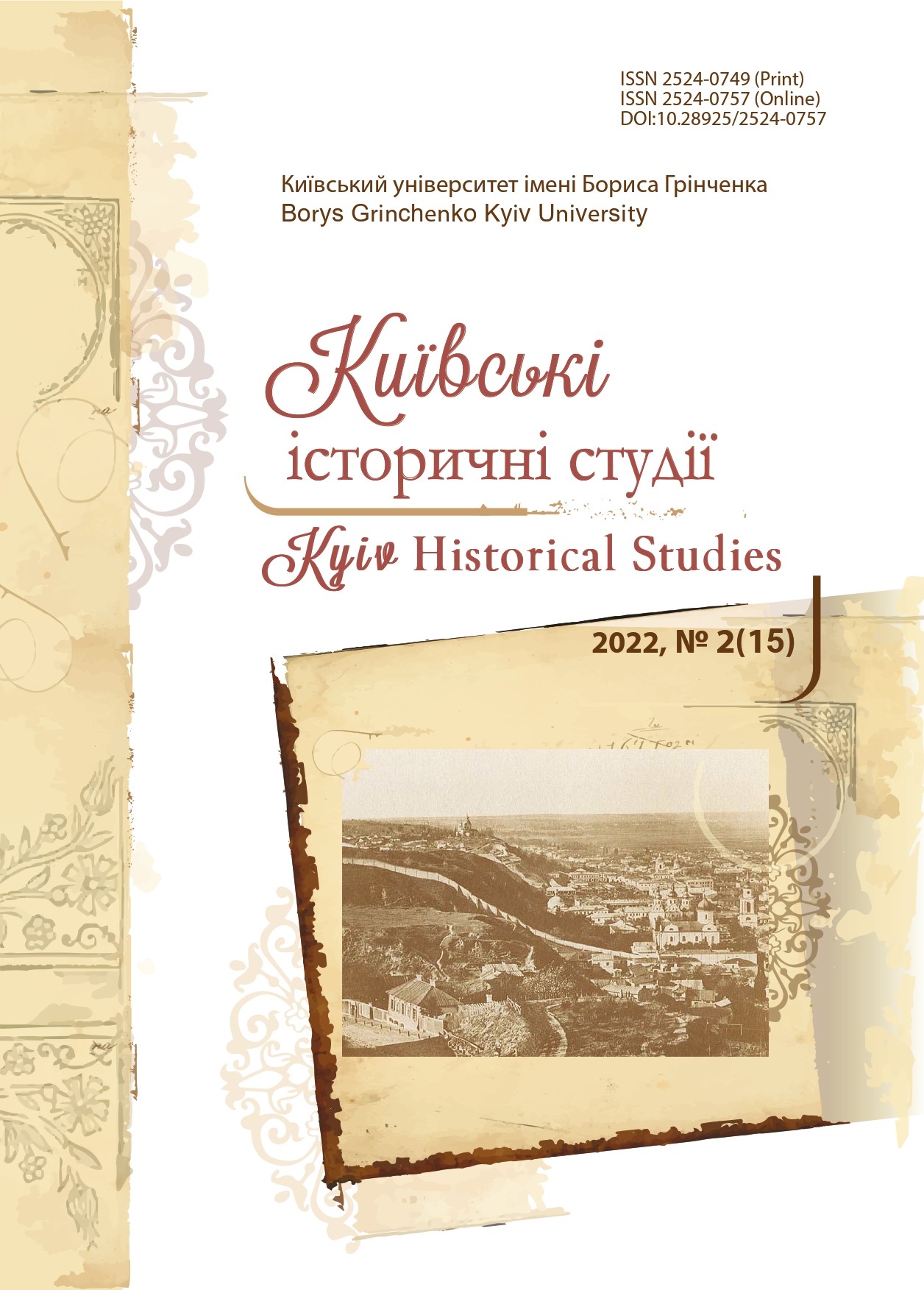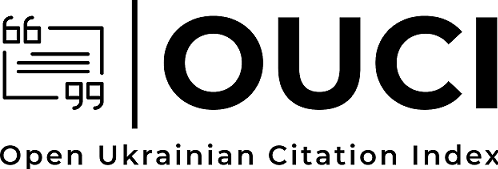Rumors as a means of forming an information space in the occupied territory of Ukraine in 1941-1944
DOI:
https://doi.org/10.28925/2524-0757.2022.210Keywords:
World War II, German occupation, territory of Ukraine, rumors, propaganda, information spaceAbstract
The article examines the phenomenon of rumors, which played an important role in the formation of the information space in the territories occupied by the German army during the Second World War. The analysis of conditions in which rumors arose and functioned is carried out; the peculiarity of rumors created by Nazi and Soviet propaganda is determined; a comparison of their characteristics and impact on the population of the occupied territories of Ukraine in 1941-1943; specific examples show the regularity of the distribution of oral messages transmitted among the Ukrainian population. The general methodological and technical mechanisms of preparation and dissemination of rumors, training of specialists who disseminated them and analyzed the events caused by their influence are shown. It is shown that the German occupation authorities used rumors as weapons. In order to spread rumors and conduct active counter-propaganda, the German government began training psychologists who developed the necessary strategy for using rumors. Based on the analysis of archival materials and literature, it is shown that both sides and the Soviet and German leadership used rumors quite effectively as one of the mechanisms influencing the consciousness of the population of the occupied territories and directly involved in the formation of information space. In addition to word of mouth, the latest technical means, including radio broadcasting, were used to spread rumors. It is concluded that rumors are a serious weapon of any propaganda, in particular in the modern Russian-Ukrainian war. Without knowledge of the laws that determine the emergence and effect of rumors, it is impossible to fight them.
Downloads
References
Greenhill, K. M. (2015). Massenmigration als Waffe. Rottenburg am Neckar KOPP Verlag KOPP Verlag. [In English].
Medhurst, M. J. (Ed.). (2018). World War II and the Cold War: Rhetoric of Heart and Mind (Vol. 8). ). East Lansing: Michigan State University. https://doi.org/10.14321/j.ctv3znw4b. [In English].
Voloshyn, Yu.V. (1997). Pravoslavna tserkva v roky natsystskoi okupatsii (1941-1944 rr.).. Poltava. [in Ukrainian].
Zabolotna, T. (2007). Povsiakdenne zhyttia kyian v umovakh natsystskoi okupatsii (veresen-hruden 1941 r.). Storinky voiennoi istorii Ukrainy, 11, 107-116. [in Ukrainian].
Kosyk, V. (1993). Ukraina i Nimechchyna u druhii svitovii viini. Paris-New York-Lviv. [in Ukrainian].
Lainbardzher, P. (1962). Psychological warfare. Theory and practice of of processing mass consciousness. E. Lamanova (Trans.). M. [inRussian].
Mykhailiuk, M. (2006). Natsystska propahanda v okupovanomu Kyievi. Ukrainian historical journal, 1, 131-144. [in Ukrainian].
Mykhailiuk, M. Nimetska propahanda v Ukraini. In In V. A. Smolii (Ed.). Ukraina v Druhii svitovii viini: pohliad z XXI stolittia (Vol. 3, pp. 644 – 658). Kyiv. [in Ukrainian].
Pihido-Pravoberezhnyi, F. (2002). Velyka Vitchyzniana viina. Spohady ta rozdumy ochevydtsia.. Kyiv. [in Ukrainian].
Stelnykovych, S.V. (2015). Zhytomyrsko-Vinnytskyi rehion v umovakh natsystskoi okupatsii (1941–1944 rr.). Zhytomyr. [in Ukrainian].
Shafyr, Ya. (1924). Hazeta y derevnia. M.–L. [inRussian].
Iashan, O.O. (2011). Osnovni zasoby vedennia natsystskoi propahandy na terytorii Ukrainy (1941 – 1944 rr.). Humanitarnyi visnyk, 3(17), 22-28. [in Ukrainian].
Published
How to Cite
Issue
Section
License
Copyright (c) 2022 Оксана Салата, Тетяна Гінетова

This work is licensed under a Creative Commons Attribution-NonCommercial-ShareAlike 4.0 International License.
Authors who publish in this journal retain the right of authorship of the work and give to the journal right of first publication of this work under the conditions of Creative Commons: Attribution-NonCommercial-ShareAlike 4.0 International (CC BY-NC-SA 4.0), which allows others freely distribute the work published with reference to the authors of the original work and the first publication of this magazine.














